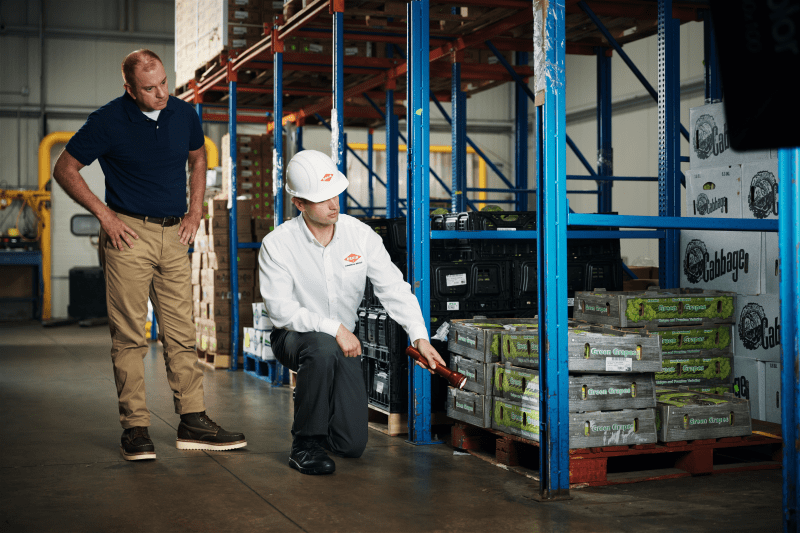- Home
- Sponsors
- Forums
- Members ˅
- Resources ˅
- Files
- FAQ ˅
- Jobs
-
Webinars ˅
- Upcoming Food Safety Fridays
- Upcoming Hot Topics from Sponsors
- Recorded Food Safety Fridays
- Recorded Food Safety Essentials
- Recorded Hot Topics from Sponsors
- Food Safety Live 2013
- Food Safety Live 2014
- Food Safety Live 2015
- Food Safety Live 2016
- Food Safety Live 2017
- Food Safety Live 2018
- Food Safety Live 2019
- Food Safety Live 2020
- Food Safety Live 2021
- Training ˅
- Links
- Store ˅
- More
Advertisement
Featured Implementation Packages
-
ISO 22000 Food Safety Management System - Food Service Edition
This is a tailor-made food safety management system implementation package for C... more
-
BRCGS Food Safety and Quality Management System for Food Manufacturers - Issue 9
This comprehensive yet simple Food Safety Management System Package contains EVE... more
From Detection to Defense: Mastering Rodent Control in Your Facility
Oct 16 2023 10:27 AM | Simon
rodents pest control pest prevention IPM
If you notice the following signs around your facility, you might have a rodent problem:
- Capsule-like droppings
- Grease marks along skirting boards and walls
- Gnaw marks on walls, wires and product
- Nests in dark areas like crawlspaces, roofing and storage rooms
Common Types of Rodents
If you suspect you may have a rodent concern in your facility, it is important to correctly identify the species you are dealing with and report any sightings to your pest control provider. Here are some of the most common species you may encounter in a commercial facility:
- House Mouse: The house mouse is a small mammal named for its propensity to live within human habitats, including food plants. Next to humans, the common house mouse is one of the most prevalent mammalian species in the world. Between five to eight inches long, these rodents can produce 50-60 offspring per year.
- Norway Rat: Norway rats are easily identifiable by their coarse brown fur and large size, measuring up to 19 inches long with their tails. These rodents may be difficult to spot during the day, as they are nocturnal, however, droppings and gnaw marks are telltale signs that these pests may be present.
- Roof Rat: More slender and agile with even longer tails than the common Norway rat, roof rats present a unique set of challenges for food processors. These pests are known to build nests at higher elevations, making them more difficult to catch.
- Deer Mouse: While deer mice are most associated with bushy, wooded areas, they can dwell in indoor spaces as the weather gets cold. They typically build nests in furniture and packaged foods. Most concerning, these mice can spread Hantavirus through their droppings and urine.
So, how can you help protect your food manufacturing and handling facility — and your employees — against rodents? By implementing an Integrated Pest Management (IPM) program.
IPM programs focus on preventive techniques like exclusion, sanitation and maintenance to keep pests where they belong — outside your business. Most food processing facilities have customized IPM programs in place, especially if they undergo regularly third-party food safety audits. These programs are implemented by qualified pest control technicians in collaboration with a facility’s food safety and quality assurance team to help deter pest activity and prevent infestations.
When it comes to rodents, there are a variety of preventive techniques that can help keep these pests at bay:
- Inspection: A comprehensive inspection will help identify and evaluate sanitation issues and structural conditions that could attract rodents. Make sure to pay attention to hard-to-reach areas such as drop ceilings, pipe and utility pathways, beneath and behind equipment or appliances, and storage areas.
- Sanitation & Waste Removal: Regular inspections and cleanout of hard-to-reach areas can proactively prevent rodents from setting up camp. Best practices include:
- Removing any clutter from your facility, including cardboard boxes and piles of debris that may be sitting out.
- Regularly cleaning out interior spaces including desk drawers, vending machines and break rooms to ensure there is no food left out.
- Keeping dumpsters far from your facility.
- Addressing any spills immediately.
- Routinely checking outside faucets and gutters for leaks and puddles.
- Exclusion: Because food processing facilities receive and send shipments daily, it’s easy for rats and other rodents to slip into transportation vehicles, packaged goods and eventually your building. Exclusion helps keep rodents outdoors by making sure potential entry points are sealed and any maintenance work is being completed in a timely manner. These tactics can include sealing cracks and crevices that rats can slip through, installing weatherstripping and door sweeps.
Author:

Benjamin Hottel, PhD, BCE, PCQI
Technical Services Manager, Rollins, LLC
Benjamin Hottel is a Technical Services Manager for Rollins. He provides technical support and guidance across all Rollins brands in the areas of training and education, operations and marketing. For more information, email benjamin.hottel@rollins.com or visit www.orkincommerical.com.








0 Comments